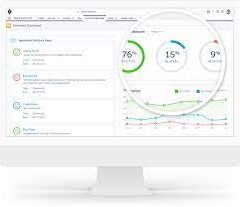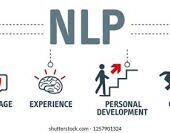What Exactly Constitutes a Large Language Model?
Picture having an exceptionally intelligent digital assistant that extensively combs through text, encompassing books, articles, websites, and various written content up to the year 2021. Yet, unlike a library that houses entire books, this digital assistant processes patterns from the textual data it undergoes.
This digital assistant, akin to a large language model (LLM), represents an advanced computer model tailored to comprehend and generate text with humanlike qualities. Its training involves exposure to vast amounts of text data, allowing it to discern patterns, language structures, and relationships between words and sentences.
How Do These Large Language Models Operate?
Fundamentally, large language models, exemplified by GPT-3, undertake predictions on a token-by-token basis, sequentially building a coherent sequence. Given a request, they strive to predict the subsequent token, utilizing their acquired knowledge of patterns during training. These models showcase remarkable pattern recognition, generating contextually relevant content across diverse topics.
The “large” aspect of these models refers to their extensive size and complexity, necessitating substantial computational resources like powerful servers equipped with multiple processors and ample memory. This capability enables the model to manage and process vast datasets, enhancing its proficiency in comprehending and generating high-quality text.
While the sizes of LLMs may vary, they typically house billions of parameters—variables learned during the training process, embodying the knowledge extracted from the data. The greater the number of parameters, the more adept the model becomes at capturing intricate patterns. For instance, GPT-3 boasts around 175 billion parameters, marking a significant advancement in language processing capabilities, while GPT-4 is purported to exceed 1 trillion parameters.
While these numerical feats are impressive, the challenges associated with these mammoth models include resource-intensive training, environmental implications, potential biases, and more.
Large language models serve as virtual assistants with profound knowledge, aiding in a spectrum of language-related tasks. They contribute to writing, offer information, provide creative suggestions, and engage in conversations, aiming to make human-technology interactions more natural. However, users should be cognizant of their limitations and regard them as tools rather than infallible sources of truth.
What Constitutes the Training of Large Language Models?
Training a large language model is analogous to instructing a robot in comprehending and utilizing human language. The process involves:
- Gathering diverse textual sources: A significant volume of books, articles, and writings forms the training data for the model.
- Reading practice: The model undergoes reading exercises where it predicts the next word in a sentence.
- Validation: Correct responses are provided to the model, with feedback given for incorrect predictions.
- Repetition: The “guess and check” cycle is reiterated numerous times, refining the model’s ability to predict words.
- Testing: The model is occasionally assessed with unfamiliar sentences to evaluate its learning proficiency.
- Specialization: For specific domains like medical language, additional training with relevant literature is conducted.
- Graduation: Once proficient, the model is acknowledged for its language expertise, ready to assist in various language-related tasks.
Fine-Tuning: A Closer Look
Fine-tuning involves further training a pre-trained model on a more specific and compact dataset than the original. It is akin to training a robot proficient in various cuisines to specialize in Italian dishes using a dedicated cookbook.
The significance of fine-tuning lies in:
- Transfer learning: Pre-trained models leverage generic knowledge from extensive datasets, transferring it to specific tasks with smaller datasets.
- Efficiency: Starting with a well-learned model reduces the need for extensive data and computational resources.
- Enhanced performance: Fine-tuned models often outperform those trained from scratch on specific tasks, benefitting from broader knowledge acquired during initial training.
Versioning and Progression
Large language models evolve through versions, with changes in size, training data, or parameters. Each iteration aims to address weaknesses, handle a broader task spectrum, or minimize biases and errors. The progression is simplified as follows:
- Version 1 (e.g., GPT-1 or BERT-base): Initial release, serving as a functional but improvable draft.
- Version 2 (e.g., GPT-2): Incorporates improvements based on feedback and technological advancements.
- Version 3 (e.g., GPT-3): Significantly larger and more capable, featuring advancements in size (175 billion parameters for GPT-3).
- Fine-tuned versions: Specialized versions tailored for specific tasks or domains.
- Other iterations: Variations like RoBERTa or DistilBERT, introducing tweaks in training strategy or architecture.
In essence, large language model versions emulate successive editions of a book series, each release striving for refinement, expansiveness, and captivating capabilities.
🔔🔔 Follow us on LinkedIn 🔔🔔











